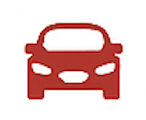Exploring the Role of Automobiles in Dutch Daily Life and Infrastructure
A Compact Country with a Complex Road Network
The Netherlands may be one of the smaller countries in Europe, but it boasts a dense and highly developed road network. With over 139,000 kilometers of roads, including around 3,500 kilometers of motorways, the country has one of the highest road densities in the world. Dutch infrastructure planning prioritizes efficiency and safety, with clearly marked lanes, modern signage, and integrated traffic management systems.
Because space is limited, urban planning in the Netherlands often includes innovative approaches to traffic flow and parking. Multi-level parking garages, park-and-ride facilities, and restricted zones in city centers help reduce congestion. Dutch motorists are accustomed to navigating compact cities and towns where road sharing with cyclists and pedestrians is the norm.
Driving Preferences and Car Ownership in the Netherlands
Despite the country's strong biking culture, car ownership remains widespread in the Netherlands. According to the Netherlands Vehicle Authority (RDW), there were over 9 million passenger cars registered as of 2023. Ownership tends to be higher in rural areas where public transport is less frequent, but even urban dwellers often maintain a vehicle for weekend travel or specific tasks.
The Dutch typically favor compact and fuel-efficient vehicles. Brands like Volkswagen, Peugeot, Toyota, and Renault are popular choices, while electric vehicle adoption is growing rapidly. Tesla, Hyundai, and Kia EVs are frequently spotted, and Dutch government incentives have played a key role in encouraging cleaner driving alternatives.
Importantly, cars in the Netherlands are subject to high taxes, including the BPM (Belasting van Personenauto's en Motorrijwielen) purchase tax and road tax (motorrijtuigenbelasting). These financial considerations influence the types of cars people choose to drive, often pushing them toward smaller, environmentally friendly models.
Electric Vehicles and Sustainability in Dutch Car Culture
The Netherlands has emerged as one of Europe's leaders in electric vehicle (EV) adoption. Government policies have made it more financially attractive to drive electric, with reduced taxes, subsidies, and exemption from congestion charges in some areas. The country aims to ban sales of new fossil-fuel cars by 2035, encouraging a long-term shift in car culture.
EV charging infrastructure is robust, with more than 130,000 public charging points installed nationwide by 2024. Cities like Amsterdam and Rotterdam have implemented dedicated EV parking zones and fast-charging stations. The presence of high-capacity chargers along major highways also supports long-distance electric travel.
Dutch consumers are increasingly environmentally conscious. Car-sharing platforms like Greenwheels and MyWheels offer electric vehicle options, helping reduce the total number of privately owned cars while meeting mobility needs. These trends reflect a cultural pivot toward sustainability that is reshaping how people approach personal transport.
Car Culture Meets Cycling Culture: Coexistence on Dutch Roads
The Netherlands is globally famous for its cycling infrastructure, and car drivers are well-accustomed to sharing the road with cyclists. Dutch law heavily favors vulnerable road users, meaning motorists must always yield to cyclists in many situations. This fosters a cautious and cooperative driving style that is notably different from countries where cars dominate roadways.
Nearly all Dutch cities feature extensive networks of separated bike lanes, and intersections are designed to minimize conflict points between cyclists and vehicles. Roundabouts often include separate circular bike lanes, and cyclists have priority over motor vehicles in many situations. Drivers undergo thorough training and testing to understand these rules before obtaining a license.
As a result, Dutch motorists tend to be more aware and respectful of non-car road users. This coexistence of transport modes contributes to a unique and balanced mobility culture that is rarely found in other car-centric societies.
Car Shows, Enthusiasts, and the Dutch Automotive Community
While the Netherlands is not known for manufacturing cars, it has a vibrant community of automobile enthusiasts. Classic car shows, tuner meetups, and motorsport events are common, particularly in the warmer months. Events like the Zandvoort Historic Grand Prix and 100% Auto Live in Rotterdam attract thousands of visitors each year.
Car clubs for brands like BMW, Volvo, and Fiat are active across the country, and online communities facilitate connections among enthusiasts. The Dutch have a particular appreciation for restored vintage vehicles, with a notable subculture surrounding classic Volkswagens and American muscle cars.
Motorsports also play a role in Dutch car culture. The Circuit Zandvoort, which hosts Formula 1's Dutch Grand Prix, has reignited interest in racing among the public. Dutch driver Max Verstappen's international success has further boosted national enthusiasm for high-performance vehicles and competitive driving.
Urban Car Restrictions and the Future of Mobility
Dutch cities are increasingly enacting measures to restrict car access in dense urban cores. Low-emission zones, high parking fees, and limited access streets are becoming more common, particularly in Amsterdam, Utrecht, and The Hague. These policies aim to improve air quality, reduce noise, and encourage more sustainable transport modes.
Autonomous vehicle trials have begun in select locations, such as on university campuses and controlled roadways, as the Netherlands positions itself at the forefront of mobility innovation. Meanwhile, app-based micro-mobility options—like shared scooters and electric cargo bikes—are offering urban residents alternatives to car ownership.
Looking ahead, the Dutch car culture is likely to continue evolving alongside global shifts in transportation. The emphasis on environmental responsibility, infrastructure efficiency, and multi-modal planning positions the Netherlands as a unique model for modern mobility.
